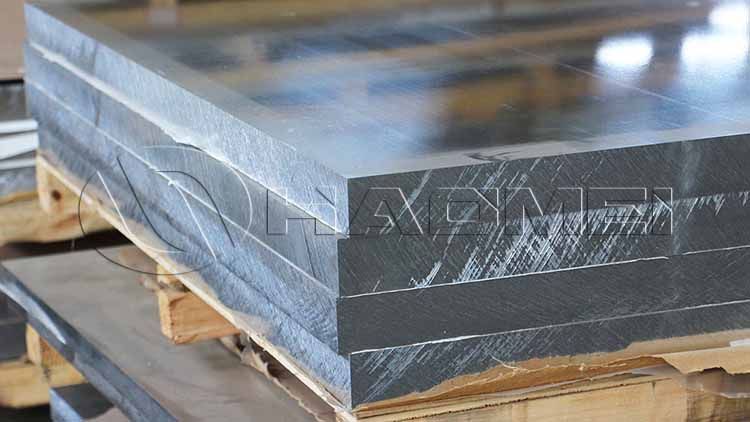
2024 aluminum sheet, a classic representative of the aluminum-copper-magnesium alloy family, has a density of only 2.73 g/cm³. Its performance differences stem primarily from the different heat treatment processes:
2024 t3 aluminum sheet: After solution treatment, cold working is performed, followed by natural aging to achieve a stable state. The cold working process acts as "mechanical strengthening," introducing dislocation structures into the matrix, creating a dual strengthening effect with the strengthening phases precipitated during aging.

2024 t4 aluminium sheet: Strengthening is achieved solely through solution treatment and natural aging, eliminating the need for cold working. Alloying elements slowly precipitate during natural aging, forming a uniformly dispersed second phase. This process is simpler and more suitable for mass production.
In terms of core mechanical properties and characteristics, 2024-T3 and T4 tempers exhibit clear differences, which can be distinguished in the following dimensions:
Tensile Strength: 2024-T3 aluminum sheet has a tensile strength of 483 MPa (70 ksi), while 2024-T4 aluminum sheet has a tensile strength of 469 MPa (68 ksi). Due to the additional reinforcement from the cold working process, T3 has a slightly higher tensile strength than T4.
Yield Strength: 2024-T3 aluminum sheet reaches 345 MPa (50 ksi), while 2024-T4 aluminum sheet has a yield strength of 324 MPa (47 ksi). The dislocation structure resulting from cold working gives T3 better resistance to deformation.
Elongation after Fracture: 2024-T3 aluminum sheet has an elongation of 18%, while 2024-T4 aluminum sheet has an elongation of 19%. T4, having not undergone cold working, has a slight advantage in plasticity and a higher tolerance for errors during actual forming.
Brinell Hardness: With a base hardness of 120HB, both 2024-T3 and 2024-T4 exhibit similar levels of ease of machining, including conventional cutting and grinding. Stress corrosion resistance: 2024-T3 performs moderately, while 2024-T4 is superior due to its more uniform precipitate distribution and lower risk of intergranular corrosion.
Fatigue strength: Both are 140MPa, maintaining consistent resistance to fatigue damage under the same cyclic load. Welcome to learn more about 2024-t3 aluminum sheet properties from us.
Core advantages: The "strength-ductility balance" imparted by cold working makes it a preferred choice for complex load-bearing components. Precision machining such as stamping and bending can be easily achieved in the hot or newly quenched state. While "tool sticking" needs to be prevented during cutting, dimensional stability is excellent.
Typical Scenarios:
Aerospace: Aircraft skin, frames, and other structural components that must withstand aerodynamic loads and require complex forming;
High-end Manufacturing: Precision parts for medical equipment and computer hard drive brackets, relying on their machining accuracy and vibration resistance;
Transportation: Ship propeller components, balancing high strength and fatigue resistance in marine environments.
Core Advantages: 2024 T4 alloy eliminates the need for cold working, shortening the production cycle by more than 30%, and the natural aging process requires no additional energy consumption. Superior stress corrosion resistance extends its service life by 20% in humid environments.
Typical Scenarios:
Automotive Manufacturing: Body frames and chassis components, suitable for mass production and requiring rust prevention;
Mold Manufacturing: Medium to large mold blanks, utilizing their good plasticity to reduce the risk of processing cracks;
General Machinery: Hydraulic valve bodies and gear blanks, balancing cost and performance requirements.
Common Shortcomings and Solutions: Both have insufficient corrosion resistance, requiring enhanced protection through anodizing or aluminum cladding, especially in harsh environments such as marine and chemical plants.
Welding Limitations: Gas welding easily induces intergranular cracks; spot welding or special inert gas shielded welding processes are recommended.
Risk of Misjudging Condition: Visual appearance cannot distinguish between the two; verification through mechanical testing is necessary—T3 shows a 5% lower strength decrease after 1 hour at a constant temperature of 300℃ compared to T4.
Original Source:https://www.aircraftaluminium.com/a/what-are-2024-t3-t4-aluminum-sheet-properties.html
Tags: 2024 aluminum sheet ,
Contact Us